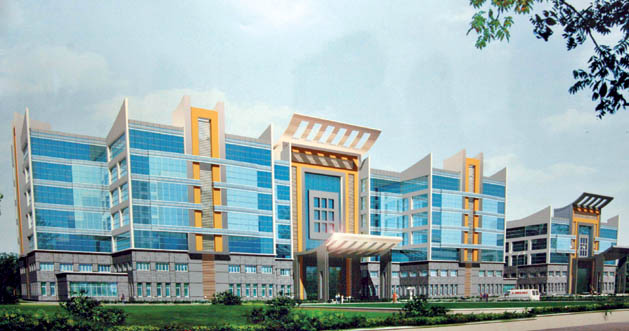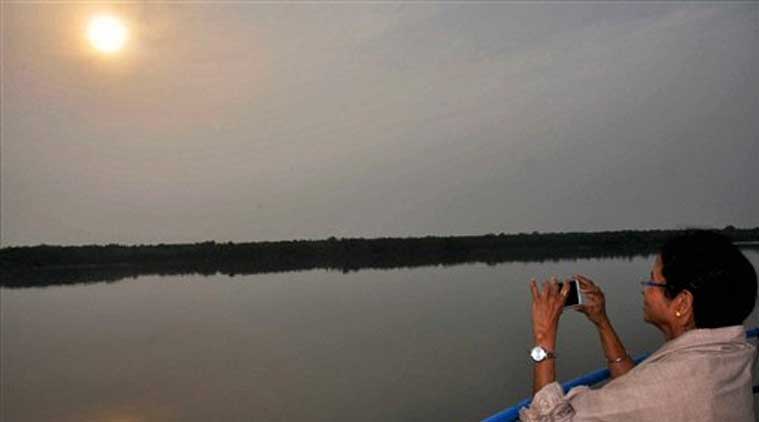Nineteen blocks of North and South 24-Parganas of West Bengal come under the Department of Sunderban Affairs. The aim of the department is to provide special assistance to these 19 blocks for their socio-economic development. Of course, these 19 fall within the purview of the other departments of the State Government, and receive the normal share of assistance from them.
The work of the Department of Sunderban Affairs may be categorised under the following heads:
- Creating infrastructure for transport
- Developing drainage systems and culverts
- Increasing agricultural output and the variety of crops grown
- Controlling soil erosion and developing mangroves
- Spreading horticulture in the region
- Ensuring adequate supply of drinking water
- Improving the infrastructure for education
- Ensuring electricity reaches all the regions
- Ensuring adequate housing
Though the department existed during the Left Front regime, that there was little development under the above-mentioned heads is evident from examining the plan outlay of the State budgets.
Budget allocation
During the last four financial years of the Left Front Government, that is, from 2007-08 to 2010-11, the allocation increased from Rs 89,77,32,000 to Rs 106,73,71,000, or by a mere 19%.
Contrast this with that during the first four financial years of the Trinamool Government: from Rs 135,02,29,000 in 2011-12 (therefore, a jump of 26.5% during the first year itself) to Rs 260 crore, or by almost 93% (92.56%, to be exact).
Comparing the fourth year (2014-15) of the Trianamool Government to the last year of the Left Front Government (2010-11) shows an increase of almost 2.5 times (2.44 times, to be exact). Further, comparing the 2010-11 number to the 2015-16 number (current financial year), which is Rs 370,00,00,000, shows that the difference has become almost 3.5 times (3.45 times, to be exact).
Therefore, it is quite clear that the Trinamool Government has put a lot of stress on the development of the Sunderbans region, and the all-round developments are there for all to see.
Three-pronged development
The plan outlay in the State Budget for the Department of Sunderban Affairs is divided into three categories.
- Sunderbans Development Fund, which constitutes the Core Plan for the Sunderbans region (and which is fully funded by the State Government)
- Rural Infrastructure Development Fund (partly borne by the Centre)
- Additional funds for the development of the Sunderbans (under Additional Compensatory Afforestation (ACA))
During its last financial year in power, that is, 2010-11, the Left Front Government allotted Rs 31,64,46,000. During its first four years in power, the Trinamool Government allotted a total of Rs 530,67,54,000, or Rs 132,66,89,000 per year on an average. Therefore, the latter, per year, has been spending more than four times that spent by the Left Front during its last year.
Report card for 2013-14
Among the important projects implemented by the Trinamool Government during 2013-14 are:
- Bricklaying of 275 km of pathways
- Concretising 48.82 km of pathways
- Metalling 67.3 km of pathways
- Constructing 20 roller-compacted concrete (RCC) jetties, three RCC bridges, two sluice gates, two culverts
- Constructing one sports complex in Mathurapur-1 block in South 24-Parganas
- Distributing bicycles among 32,209 ninth standard students in the region
Fund allocation under the three categories mentioned earlier:
- Sunderbans Development Fund – Rs 141 crore
- Rural Infrastructure Development Fund – Rs 115 crore
- ACA – Rs 18 crore
Report card for 2014-15
Among the important projects implemented by the Trinamool Government during 2013-14 are:
- Bricklaying of 136.43 km of pathways
- Concretising 27.29 km of pathways
- Metalling 14.35 km of pathways
- Constructing 15 RCC jetties, one sluice gate
- Constructing an RCC bridge over Mridangabhanga River, linking Mathurapur-2 and Patharpratima blocks
- Constructing two college buildings and four ITI buildings
- Distributing bicycles among 19,000 ninth standard students in the region
Coming to agricultural development of the Sunderbans, during 2014-15, 70,000 farmer families have been provided help on various fronts, like distribution of oilseeds (sunflower and til) to small and marginal farmers, distribution of saplings for planting during the boro season, distribution of agricultural implements like hand sprayers and distribution of vermin compost among marginal farmers.
Year 2015-16
Among the major plans for financial year 2015-16 are:
- Constructing seven RCC bridges
- Laying of 480 km of roadways
- Distribution of seeds, fertilizers and agricultural implements among 71,000 small and marginal farmers
For all these, Rs 370 crore has been allotted by the State Government under the Budget, which is 42.3% more than the amount for 2014-15.
Therefore, under the Trinamool Government, there has been an unprecedented development of the Sunderbans region. Chief Minister Mamata Banerjee, through her able leadership, has managed to bring about the kind of development which most people never expected.










